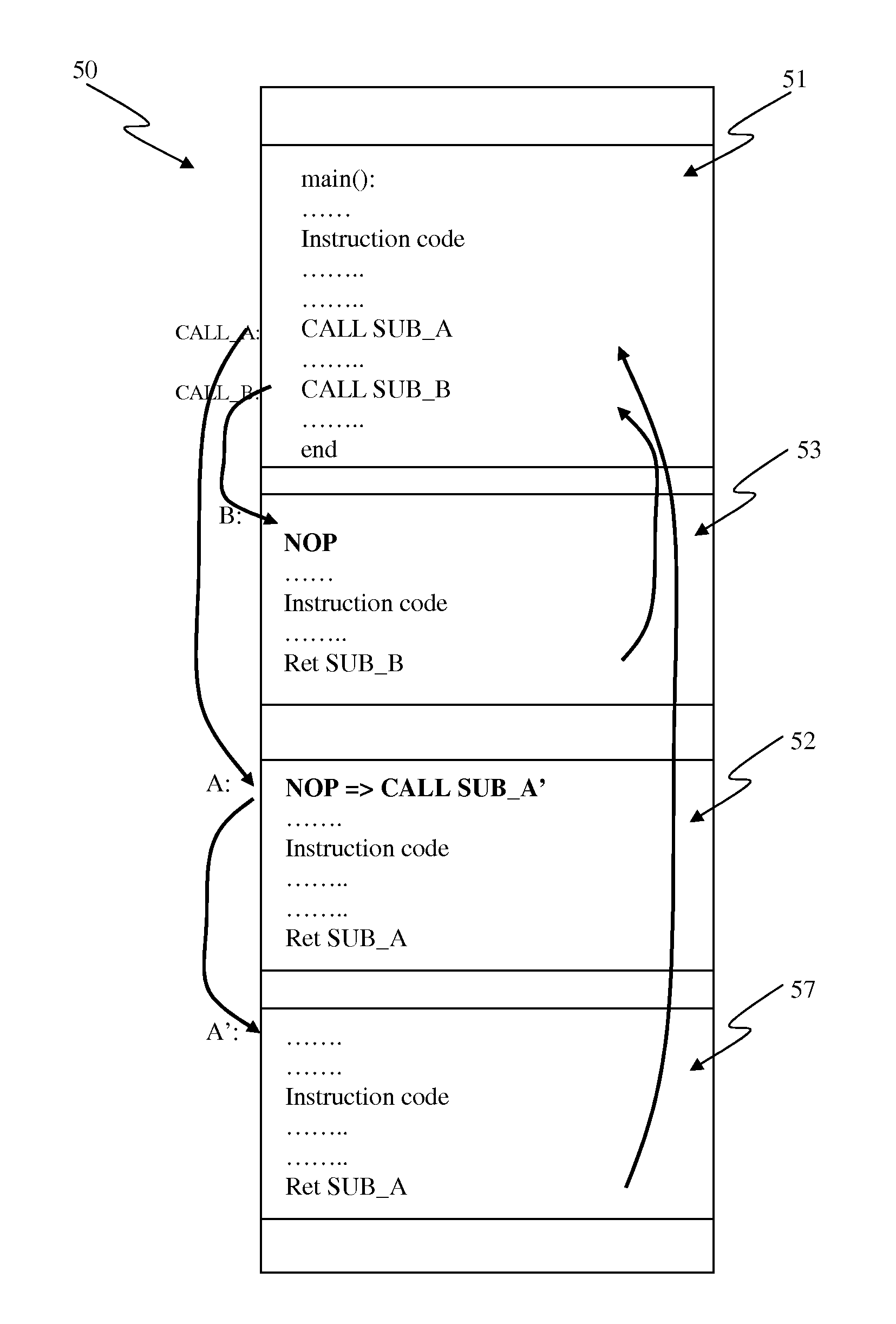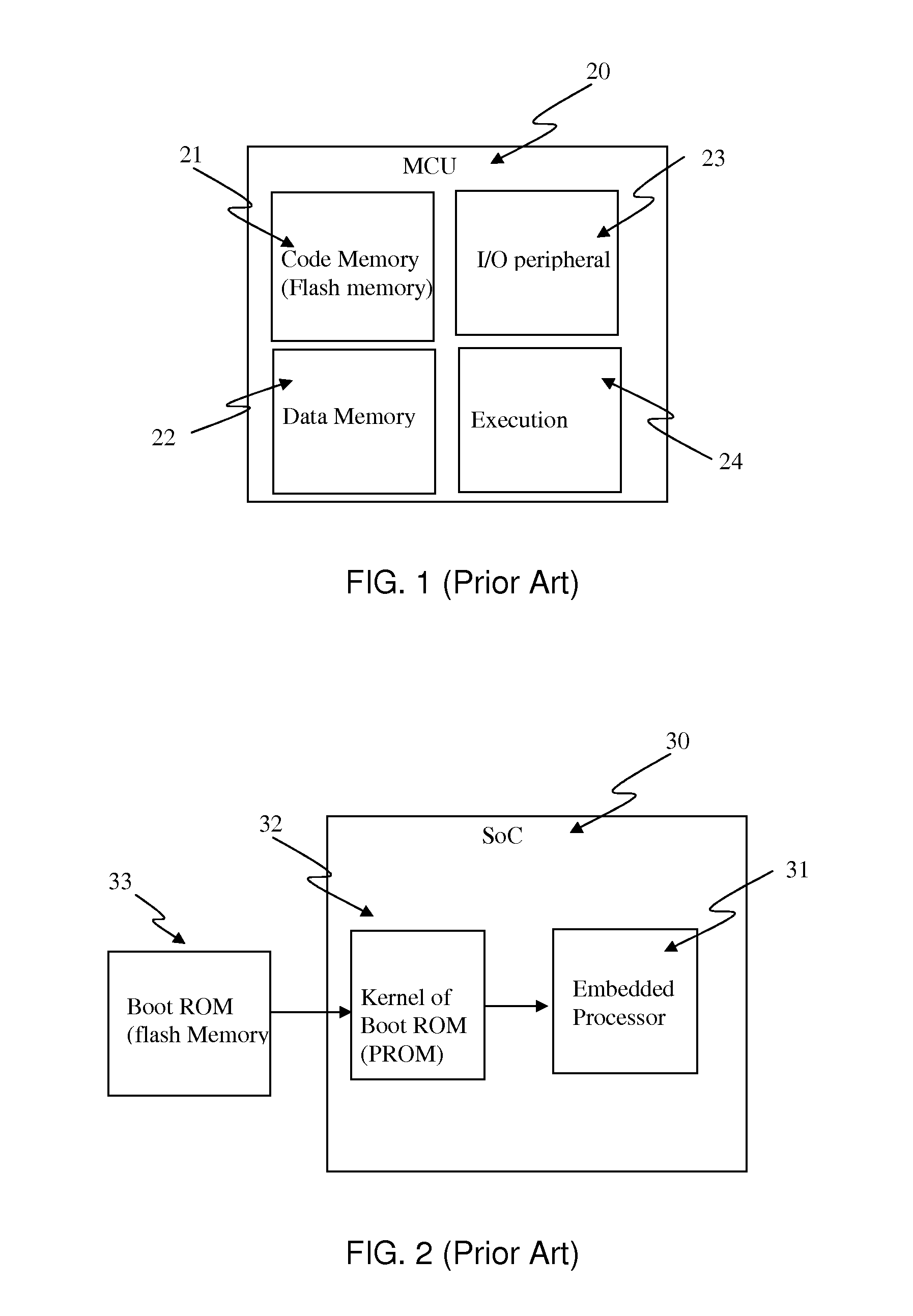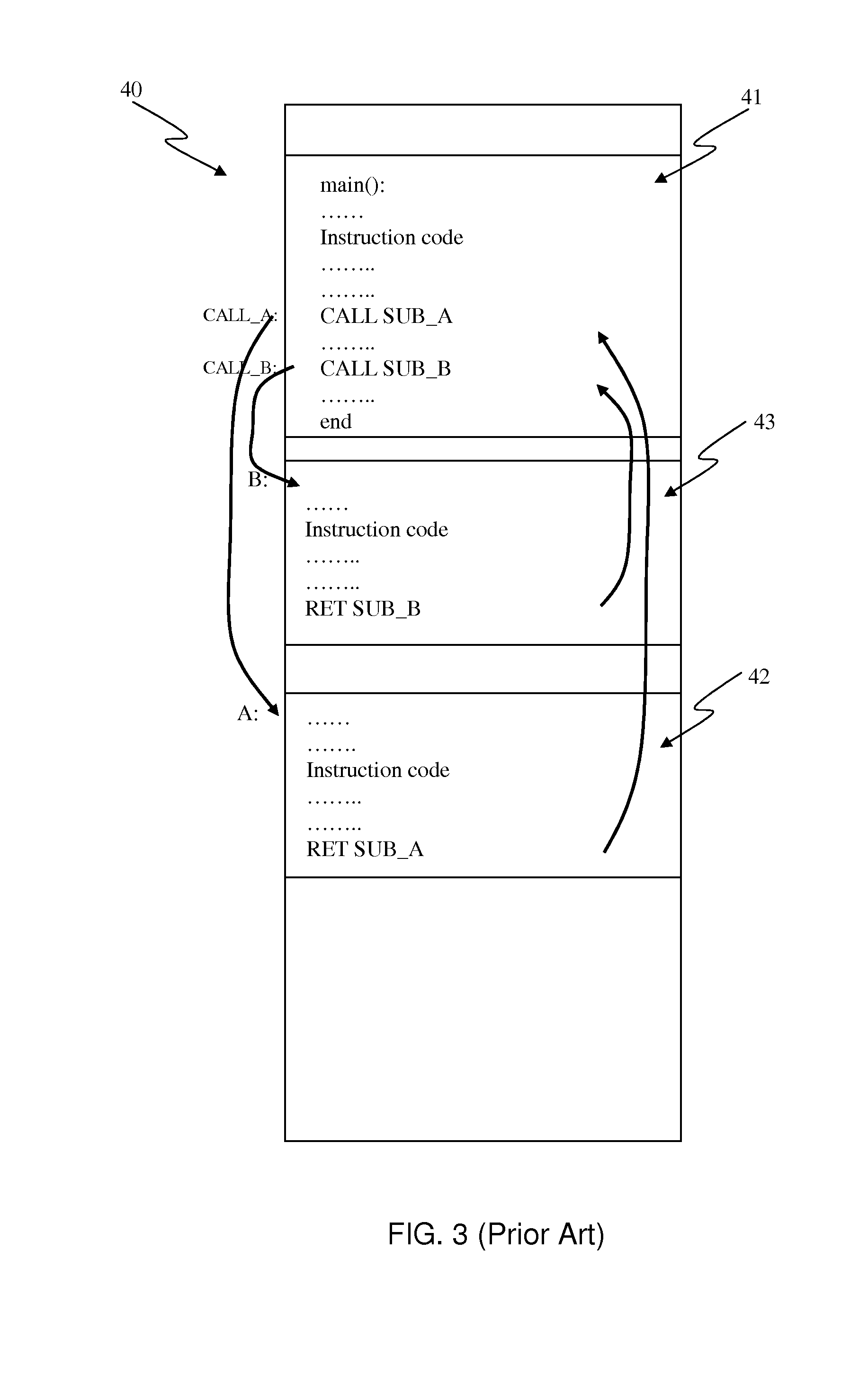Method and System of Using One-Time Programmable Memory as Multi-Time Programmable in Code Memory of Processors
a one-time programmable and code memory technology, applied in computing, instruments, electric digital data processing, etc., can solve the problems of not being able to program memory cells once, mtp memory is not practicable to be used for booting code kernels, and memory cell can only be programmed on
- Summary
- Abstract
- Description
- Claims
- Application Information
AI Technical Summary
Benefits of technology
Problems solved by technology
Method used
Image
Examples
Embodiment Construction
[0032]The invention pertains to a method, device and system of using an One-Time-Programmable (OTP) memory as an Multiple-Time Programming (MTP) memory equivalent to allow code to be updated one or more times and yet remain small in size and relatively easy to process (fabricate). The code can be program code for a processor, such as boot code, boot code kernel or other instruction code. For example, the OTP memory can be fabricated with standard CMOS processes as memory to replace the costly FLASH memory or Multiple-Time-Programmable (MTP) memory for processors, such as microprocessors, Micro-Controller Unit (MCU), embedded processors, or Digital Signal Processors (DSP).
[0033]According to one aspect, an OTP memory is able to functionally operate as if it were a MTP memory through intelligent use of NOPs, which are no operations. During normal operations, the NOPs are executed but nothing happens, except wasting a few clock or processing cycles. The processor's NOP code needs to be ...
PUM
 Login to View More
Login to View More Abstract
Description
Claims
Application Information
 Login to View More
Login to View More - R&D
- Intellectual Property
- Life Sciences
- Materials
- Tech Scout
- Unparalleled Data Quality
- Higher Quality Content
- 60% Fewer Hallucinations
Browse by: Latest US Patents, China's latest patents, Technical Efficacy Thesaurus, Application Domain, Technology Topic, Popular Technical Reports.
© 2025 PatSnap. All rights reserved.Legal|Privacy policy|Modern Slavery Act Transparency Statement|Sitemap|About US| Contact US: help@patsnap.com



